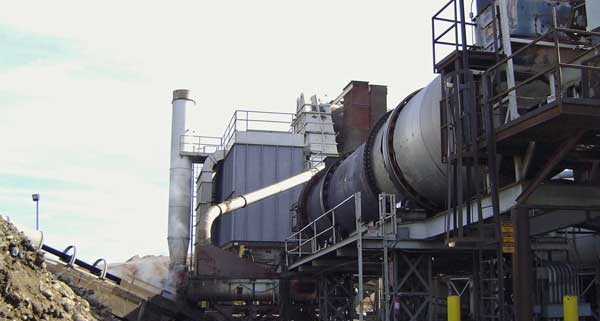At present, there are three types of small-scale domestic refuse organic combustible waste treatment furnaces, including mechanical grate, rotary kiln retorting and pyrolysis gasifier.
1 .mechanical grate incinerator
The mechanical grate incinerator uses layered combustion technology, which has the advantages of low requirement for garbage pretreatment, wide adaptability to garbage calorific value and simple operation and maintenance. It is the most commonly used municipal solid waste incinerator in the world with the largest disposal capacity from small to large.
It has been widely used in advanced countries such as Europe and the United States. Its single unit can reach 1200 t/d with mature and reliable technology. Garbage usually passes through three sections on the grate: preheating and drying section, combustion section and burning-out section to realize the ignition of garbage on the grate. The heat comes from the radiation above and the convection of flue gas as well as the interior of the garbage layer. The burning garbage on the grate makes the garbage layer turn and agitate intensely through the reversal of the grate, which causes the burning of the bottom of the garbage. Continuous turning and agitation also loosen the garbage layer and enhance the permeability, which is conducive to the burning and burning of garbage.
2. Rotary kiln retorting equipment
The reaction mechanism of rotary kiln retorting equipment is similar to that of scrap tire pyrolysis refining equipment. It consists mainly of an inclined steel cylinder surrounded by a combustion chamber for external heating. The garbage enters the cylinder from the entrance, and moves forward along the rotating edge of the cylinder. The drying and cracking processes of garbage are completed in the cylinder. The residence time of garbage in the kiln can be adjusted according to the change of rotational speed of the cylinder. Rotary kilns are often used in pyrolysis refining of waste tyres and industrial plastic waste. They are also used in domestic waste treatment.
3. pyrolysis gasifier
After drying, the domestic refuse enters the pyrolysis gasifier through conveying equipment. First, it enters the drying section and removes water (including molecular water) at 150 ℃. Drying refuse enters the pyrolysis layer. At 200℃ to 650 ℃, different substances are pyrolyzed to produce flammable gases such as alkanes, hydrocarbons, olefins, etc. At 800 ℃, the substances enter the oxidation section and produce some carbides. Combustion produces a temperature of about 1000 C, which causes the reaction of CO2 and C to produce CO gas. This stage is the gasification stage. After the water vapor enters the fire layer, one is to adjust the furnace temperature, the other is to produce H2 and CO gas, which completes the whole process of pyrolysis and gasification.
Pyrolysis gasification is a controllable combustion and reduction process. The whole process environment is in a state of hypoxia, which can fully restrain the production of dioxins, polycyclic hydrocarbons (PAtt) and aldehydes. Moreover, sulfur and oxygen in garbage are mostly slagging in the form of compounds, and a small part of them form SO2 and HCl.
The function of combustible gas after purification:
(1) It can be used as fuel for burning bricks in tunnel kiln of sintered brick factory. The brick slabs were dried by high temperature flue gas and then used as heat medium for garbage drying drum to dry garbage.
(2) It can be used as fuel for steam or hot water boilers. Steam or hot water can be supplied to the users of steam and hot water to realize profit. The high temperature tail gas of the boiler can be used as heat medium for garbage drying drum to dry garbage.
(3) It can also be used as fuel for internal combustion engines to drive generators to generate electricity, to supply power to the grid or for self-use, and to achieve benefits. The high temperature exhaust gas produced by internal combustion engine can also be used as heat medium for garbage drying drum to dry garbage.
The application of the most advanced third generation garbage treatment technology in the world in the garbage pyrolysis gasifier of Luoyang Building Materials Architectural Design Research Institute can make the garbage completely harmless and fully utilized as a resource. It has the following advantages: low investment, low operation cost, flexible equipment grouping and short construction period. Its process can effectively and timely reduce, harmless and resource-based treatment and utilization of all domestic waste generated on that day. And completely eliminate secondary pollution, save a lot of land resources. The overall process and equipment have reached the international advanced and domestic leading level.



